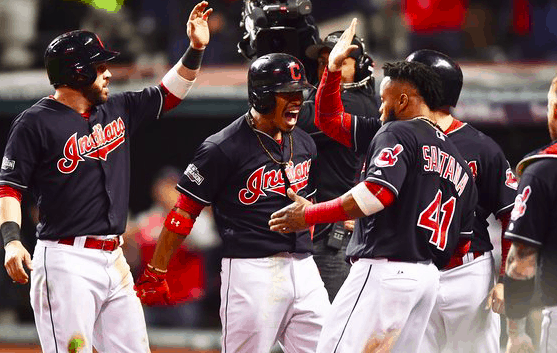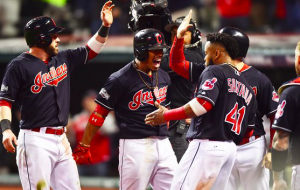Posted on December 31, 2016 by Bryan Zarpentine
Coming within one game of a World Series title has been a game changer for the Cleveland Indians. Ownership is investing in the team and with ticket sales, the team is expecting a significant increase in revenue. However, with many valuable free agents still available and a few needs left to fill, it’s possible that the Indians have already spent all they can afford this winter, which could leave them scrambling to fill some holes late in the offseason.
Reports out of Cleveland indicate the team’s payroll could increase from around $95 million in 2016 to nearly $135 million in 2017. That’s a significant increase for a club that has rarely spent frivolously over the years. The fact that the Indians have agreed to sign Edwin Encarnacion to a deal that could be worth as much as $80 million is emblematic of the club’s ability to spend more coming off their World Series appearance. That willingness to spend and the addition of Encarnacion are both huge steps forward in Cleveland achieving sustained success.
However, the signing of Encarnacion, who will reportedly make $20 million per season, may also prevent Cleveland from spending any further this winter. Between the addition of Encarnacion, arbitration eligible players receiving raises, and the salaries of players like Andrew Miller who were acquired midseason in 2016, the Indians are close to maxing out on their payroll for 2017, even with a close to $40 million increase in payroll.
Of course, the signing of Encarnacion fills one of Cleveland’s biggest needs this offseason, but the Indians still have work to do, and they may not have much money with which to do it. The Indians need to add at least one more outfielder, as well as a utility infielder. It also wouldn’t hurt Cleveland to add another arm to the bullpen or even the rotation to help guard against potential injuries.
The Indians are hoping to re-sign Rajai Davis, who played a key role for them in 2016. Davis provided a platoon partner with Tyler Naquin, as well as a viable backup at the corner outfield spots. There’s still no certainty that Michael Brantley will come back healthy after missing most of 2016 with a shoulder injury, and so having a player like Davis who could split time with Naquin and provide insurance for Brantley would be invaluable.
Davis remains unsigned, but if he were to have multiple suitors, he would likely be priced out of Cleveland’s range. This would force the Indians to look elsewhere for a free agent or rely on a player like Abraham Almonte to fill a much bigger role than he did last year. Even if the Indians were fine with Almonte in a platoon with Naquin, adding another outfielder to provide depth would be preferable; that is, if they can find the money.
In addition to outfield help, the Indians would also be wise to add an infielder who can backup multiple positions. Veteran Michael Martinez would be in line for that role at the moment, but the Indians would be far better off signing a more reliable player to backup the infield trio of Jason Kipnis, Francisco Lindor, and Jose Ramirez. Again, that may not be possible if money is tight after signing Encarnacion.
So while increasing payroll as much as $40 million is a huge step for Cleveland, the Indians may not feel the effect of it in 2017 outside of Encarnacion, who is filling the role that Mike Napoli played in 2016. Even with a great roster on paper, the Indians still have some needs to fill, but whether they have the money to adequately address those needs remains uncertain.


